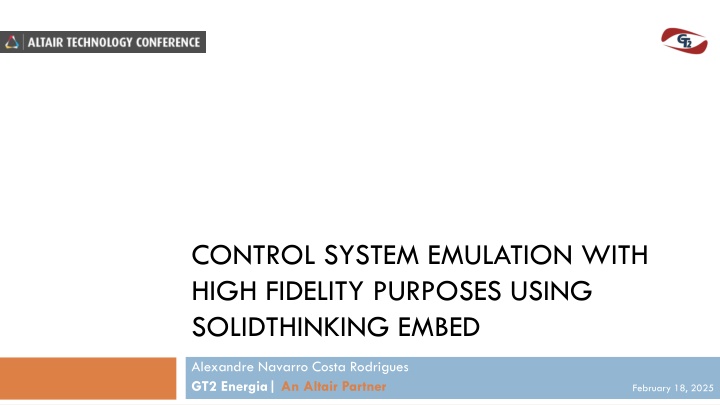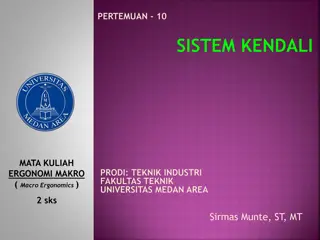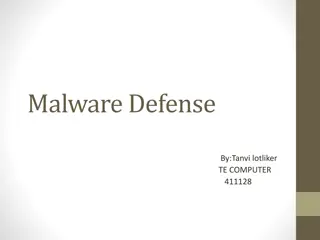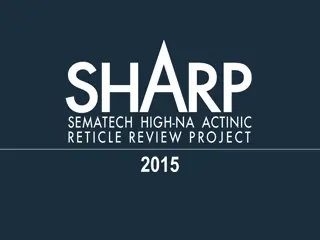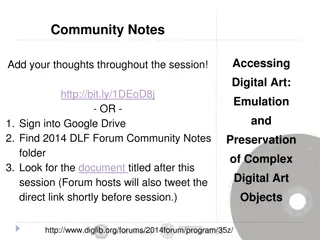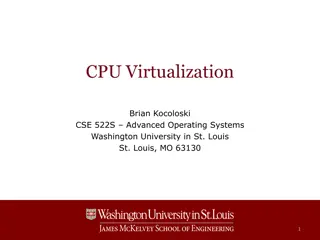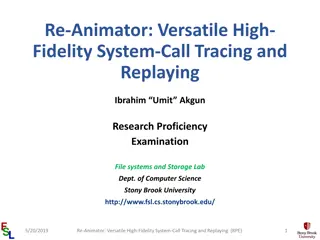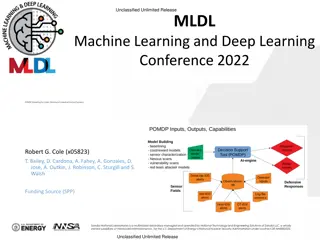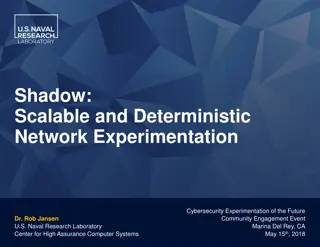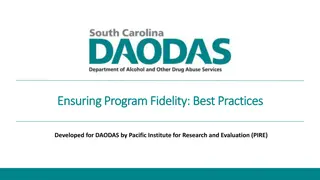High Fidelity Control System Emulation
This project focuses on creating high-fidelity power plant simulators for training purposes to enhance operator skills efficiently. Training methods, risks, and benefits are discussed, emphasizing the importance of control logic emulation for effective training. Various emulation methods are explored, including manual and automatic approaches, to replicate real-world power plant responses accurately.
Download Presentation

Please find below an Image/Link to download the presentation.
The content on the website is provided AS IS for your information and personal use only. It may not be sold, licensed, or shared on other websites without obtaining consent from the author.If you encounter any issues during the download, it is possible that the publisher has removed the file from their server.
You are allowed to download the files provided on this website for personal or commercial use, subject to the condition that they are used lawfully. All files are the property of their respective owners.
The content on the website is provided AS IS for your information and personal use only. It may not be sold, licensed, or shared on other websites without obtaining consent from the author.
E N D
Presentation Transcript
CONTROL SYSTEM EMULATION WITH HIGH FIDELITY PURPOSES USING SOLIDTHINKING EMBED Alexandre Navarro Costa Rodrigues GT2 Energia| An Altair Partner February 18, 2025
Project Description 2 What we do High fidelity powerplants simulators for training purposes
Project Description 3 Training is mandatory for: Educating inexperienced operators Retraining experts Brazilian scenario for non-nuclear powerplants: Training is mostly performed on-site!
Project description 4 Down sides of training on-site: It s dangerous for human and can damage expensive equipment 1. It s very restricted 2. Operators cannot execute any procedure at any time 1. Operators cannot deliberately break equipment to study malfunctions 2. On a simulator, on the other hand, operators can do anything anytime Insert malfunctions Test new procedures against old ones
Requirements 5 High Fidelity It s expected to represent the reference powerplant response as it is in real world
Requirements 6 Full Scope It s expected to represent the whole reference system, not only part of it
Risk 7 Negative training Waste time Cause operating mistakes
Project Description 8 Control logics emulation is the most effective way to avoid negative training It provides the highest fidelity solution possible
Project Description 9 Three ways to do that: Manual emulation Automatic emulation Automatic emulation in proprietary DCS/HMI software
Manual emulation 10 Manually build control loops diagrams from the reference powerplant into the simulated system
Automatic emulation 11 Automatically build control loops diagrams from the reference powerplant into the simulated system
Automatic emulation in proprietary software 12 Automatically connect the control loops diagrams from the reference powerplant into the simulated system using the reference powerplant DCS
Comparisons 13 Manual emulation Automatic emulation High development time Quick and efficient Easy update Difficult update Lower error rate Higher error rate Needs a translator tool Besides documentation, needs no other tool than a modelling and simulation software
Goal 14 Develop an approach to perform automatic emulations of any DCS/HMI
Typical logic diagram 15 Generic blocks Variables Variables Constants Generic blocks
Software choice 16 Embed important features: Dynamic system modelling and simulation Automatic code generation Key feature: Ability to represent a diagram by comprehensive text patterns
Methodology 17 Review DCS manuals Implement specific PID algorithm and other logic functions 1 Validate its results against manuals and operation data
Methodology 18 When implementing: Pay attention to particularities 1 Names patterns Input names Output names Alarms conditioning Exception handling
Methodology 19 DCS 1 DCS 2
Methodology 20 Collect diagrams data from the powerplant DCS 2 Examine its patterns
Source types 21 Sources are classified by their quality: High quality source All information can be extracted automatically File texts like XML High effectiveness
Source types 22 XML from powerplant DCS Translated Embed file
Source types 23 Sources are qualified by their quality: Medium quality source Most information can be extracted automatically Textual sketches in PDF files Requires PDF Mining Medium effectiveness
Source types 24
Source types 25 Sources are qualified by their quality: Low quality source Almost no information can be extracted automatically Hand sketches Pictures Physical books Low effectiveness
Methodology 26 Build a translator tool to Embed 3 Make final adjustments Generate C Code
Current process 27 1: PDF Mining to extract data 2: Translator to Embed 3: Translator to Embed 4: Adjustments to create compiled component
Under construction 28 1: PDF Mining to extract data Low quality source 2: Translator to Embed 5 3: Translator to Embed 4: Adjustments to create compiled component 5: Translator to XML
Closure 29 Key features for automatic emulation off-the-shelf Dynamic systems modelling and simulating Automatic code generation for embedding into our Simulators Comprehensive text patterns for automatic diagram building A huge time saving 9 months 3 months
Questions & Answers 30 Alexandre Navarro Costa Rodrigues Project Manager Control Systems Engineer +55 21 98660-257 | +55 21 3733-4167 | +55 21 3733-4168 alexandre.navarro@gt2.com.br GT2 Energia | An Altair Partner
